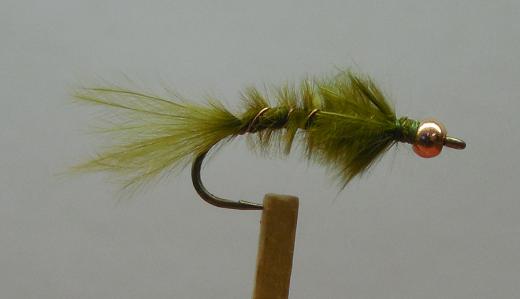The Trout Line Newsletter - June 18, 2018
THE TROUT LINE
June 18, 2018
Welcome to The Trout Line Newsletter! This is our Tualatin Valley Trout Unlimited Chapter newsletter that will be coming out twice a month on the 1st and 3rd Mondays of the month.
Fly of the Month - Damselfly Nymph
Written by Mike Gentry.
A damselfly hatch is one of the most enjoyable fishing afternoons we can spend on the many lakes in this area. But surface fishing usually does not begin in earnest until early afternoon on days when the sun has urged the emerging insects on the reed edges to climb out and develop into full adults status and to begin swarming over the water. So what is an impatient (who - me?) fisher to do in the meantime? The answer is to go subsurface. From first light throughout the afternoon, the preemerging teenagers are actively motating near the shore. On those occasions, a damselfly nymph is the perfect solution. There are many effective patterns, but the pattern featured here had proven to be effective and is simpler than most.
Hook: TMC 2302, #12
Thread: 8/0, olive
Head: small copper body
Tail and body: olive marabou
Ribbing: small copper wire
1. Place the bead on the hook and move it to against the eye of the hook and secure with a few wraps of thread.
2. Wind the thread back to slightly down the curve of the hook.
3. Select a bunch of long marabou fibers and tie the tips with several wraps of thread, so that the tips form a tail about the length of the hook shank to the curve. The rest of the marabou fiber clump can hang loose for the moment.
4. Tie in a length of copper wire with several wraps of thread at the point where the tail is tied. Wind the thread forward to the back of the bead.
5. Twist the butt ends of the marabou fibers with your fingers to make a yarn of the marabou fibers, and wind around the hook forward to the bead (being sure to start the winds to cover the tail tie-in) and tie off and trim.
6. Counterwind the copper wire ribbing with seven or eight winds forward to the bead and tie off with several wraps of thread and trim.
7. Tie in two small clumps of marabou, each against the back of and on either side of the bead. Trim the excess.
8. Wrap, tie off, clip and thread-cement the thread right behind the bead.
This pattern is best fished close to the shore, but I have had success even toward the middle of many lakes, especially around any objects such as bushes or trees protruding above the surface. The natural is a slow-swimming but wiggly, oscillating creature in its efforts to climb out of the water to mature on shore, reeds, or any fishing craft that happens to be near. When you see these critters crawling up your float tube or body to greet you, it's time to tie on their cousin. Fish anywhere from slightly under the surface (easier to do if the beadhead is omitted) to three or four fee down, with moderately slow hand twists and pauses. Slow and erratic (a phrase applied to some of us) does the trick!
Meetings Location and Dates
Regular chapter meetings are held at the Lucky Labrador Public House 7675 SW Capitol Hwy. Portland, OR 97219 (503) 244-2537. Food and beverage available. Social get together starts at 6:30 pm and formal meeting starts at 7:00 pm unless otherwise noted in the newsletter or website.
July Picnic: July 11, 2018 6:00 - 9:00pm at Cook Park, Tigard, Oregon Site is way in the back by Tualatin Riverside. Please bring a side dish or dessert to share. We will be having a silent auction.
More Information:
TVTU Website: https://tualatinvalley.tu.org/
Current Board Members and Contact:https://tualatinvalley.tu.org/tualatinvalley/about
TVTUBlog: http://tvtroutunlimited.blogspot.com/
TVTU Facebook Page: https://www.facebook.com/tualatinvalleyTU/
C4C Facebook Page: https://www.facebook.com/christmasforcoho/


